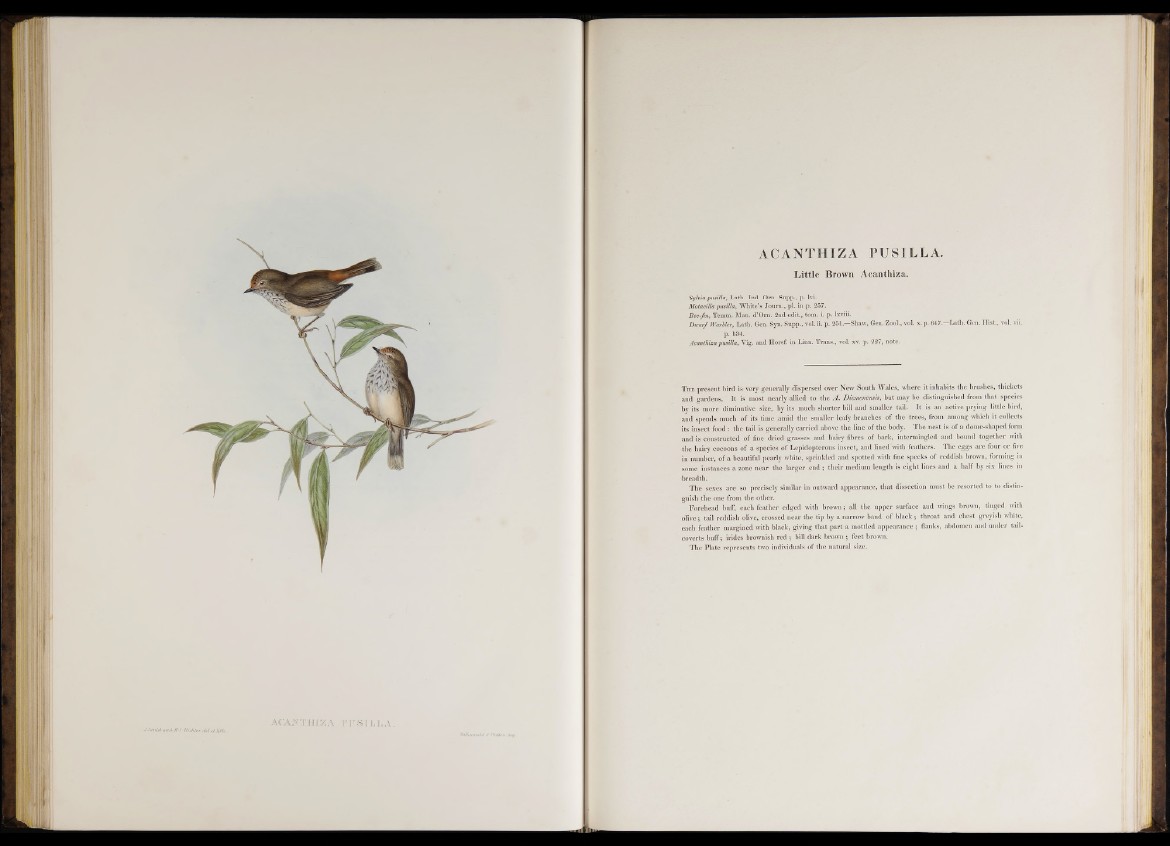
ACANTHIZA PUSILLA.
Little Brown Acanthiza.
Sylvia pusilla, Lath. Ind. Ora. Supp., p. Ivi.
Motacilla pusilla, White’s Journ., pi. in p. 257.
Bec-jm, Temm. Man. d’Om. 2nd edit., tom. i. p. lxviii.
Dwarf Warbler, Lath. Gen. Syn. Supp., vol.ii.p. 251.—Shaw,Gen.Zool., vol. x.p. 647—Lath. Gen. Hist., vol. vii.
p . 134.
Acanthiza pusilla, Vig. and Horsf. in Linn. Trans., vol. xv. p. 227, note.
The present bird is very generally dispersed over New South Wales, where it inhabits the brushes, thickets
and gardens. It is most nearly allied to the A. Diemenensis, but may be distinguished from that species
by its more diminutive size, by its much shorter bill and smaller tail. It is an active prying little bird,
and spends much o f its time amid the smaller leafy branches o f the trees, from among which it collects
its insect food : the tail is generally carried above the line o f the body. The nest is o f a dome-shaped form
and is constructed of fine dried grasses and hairy fibres o f bark, intermingled and bound together with
the hairy cocoons o f a species of Lepidopterous insect, and lined with feathers. The eggs are four or five
in number, o f a beautiful pearly white, sprinkled and spotted with fine specks o f reddish brown, forming in
some instances a zone near the larger en d ; their medium length is eight lines and a half by six lines in
breadth.
The sexes are so precisely similar in outward appearance, that dissection must be resorted to to distinguish
the one from the other.
Forehead buff, each feather edged with brown; all the upper surface aud wings brown, tinged with
olive; tail reddish olive, crossed near the tip by a narrow band o f black ; throat and chest greyish white,
each feather margined with black, giving that part a mottled appearance ; flanks, abdomen and under tail-
coverts buff; irides brownish red ; bill dark brown ; feet brown.
The Plate represents two individuals of the natural size.